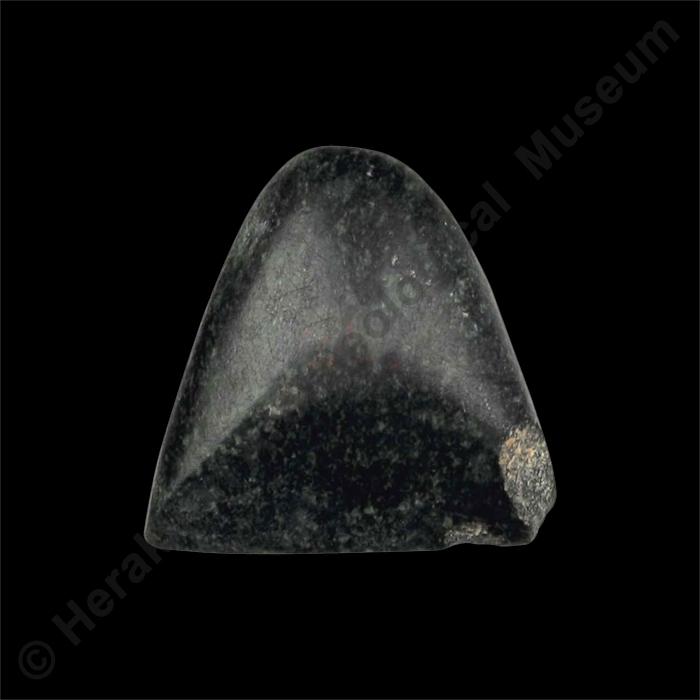Stone axe
Λ1484
Stone (Serpentinised diabase)
Excellent
Length of blade: 4 cm.
Knossos
South of the palace
Middle - Late Neolithic period:
4500-3600 BC:
Gallery:
ICase:
3Exhibition thematic unit:
Stone Age (7000-3000 BC). The first communitiesTools
Description
Small single-bladed axe of serpentinised diabase. The relatively soft stone selected was easily worked using the polishing techniques which were disseminated from the beginning of the Neolithic period, largely replacing the older knapping techniques. This is one of dozens of small stone tools found in the Neolithic residential fill of the hill of Knossos. There is evidence that the raw material used for the production of stone tools from the beginning of the Neolithic period was among the goods circulated in the exchange network already developed in Crete. The exploitation of sources of stone changed radically in the Neolithic period, a shift that is particularly evident at Neolithic Knossos, the site of one of the few settlements of the Aceramic period in Greece. This development was largely driven by the transition to agriculture, as new tools were needed for the cultivation of the soil and the processing of the new agropastoral products.Bibliography:
Strasser, T. F. 2008. Stones of contention: regional axe production and hidden landscapes of Neolithic Greece. in V. Isaakidou & P. Tomkins (eds) Escaping the Labyrinth. The Cretan Neolithic in context. Sheffield studies in Aegean Archaeology, 8. Oxbow Books. Evans, A. The Palace of Minos at Knossos. Vol. I. London. Evans, J.D. 1994, The Early Millennia: Continuity and change in a farming settlement. in D. Evely, H. Hughes-Brock and N. Momigliano (eds) Knossos, A Labyrinth of History. Papers in honour of Sinclair Hood, British School at Athens, Oxford, Oxbow Books.Author:
I. G.Photographs' metadata
